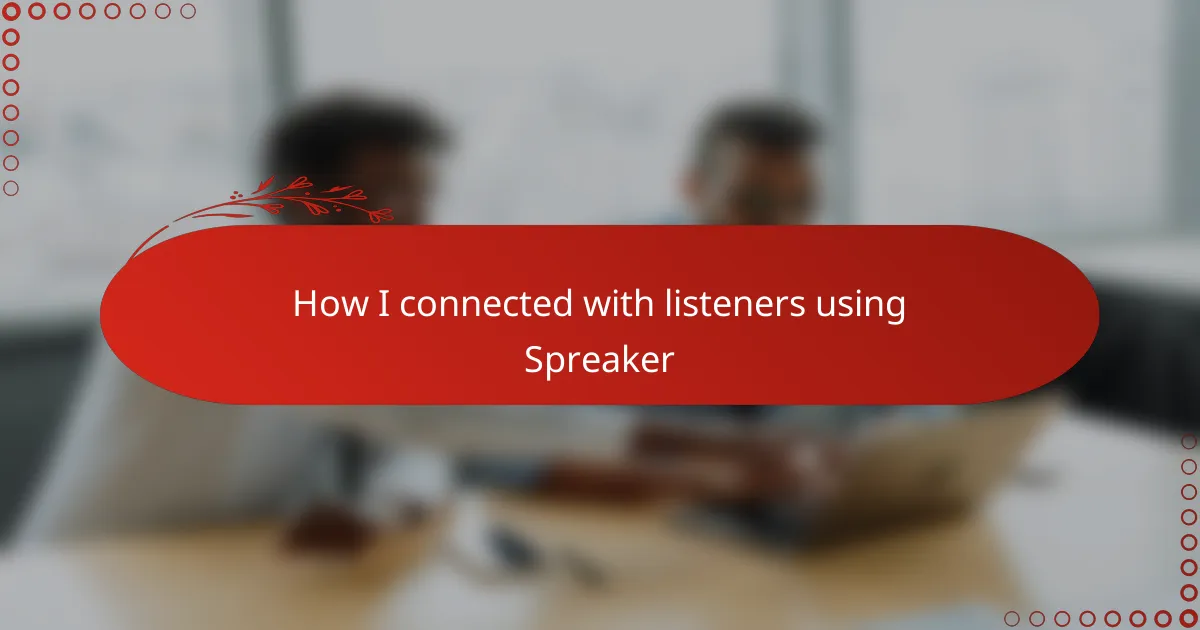Key takeaways
- Spreaker offers a user-friendly platform that combines podcasting and live radio, enhancing audience engagement through real-time interactions.
- Establishing a Spreaker account is straightforward, empowering users to set up their broadcasts and build a community from the start.
- Utilizing analytics to understand audience preferences can significantly shape content and increase listener loyalty.
- Creating an interactive environment through open-ended questions and personal storytelling fosters a deeper connection with listeners.
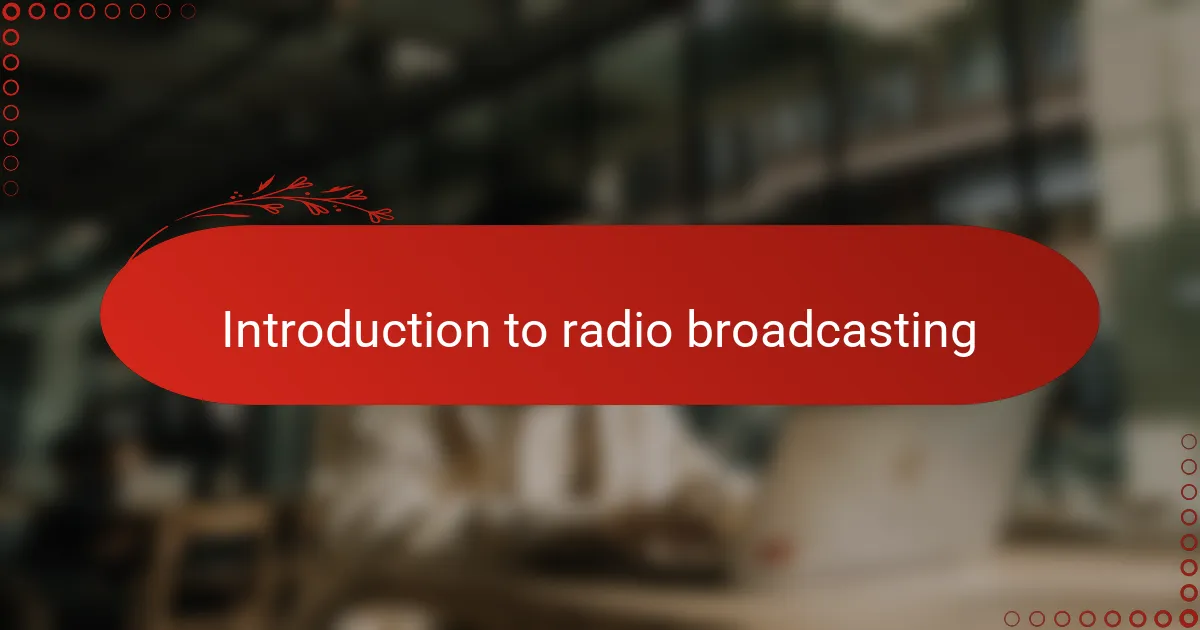
Introduction to radio broadcasting
Radio broadcasting has always fascinated me because it creates a unique connection between a voice and countless listeners. It’s incredible how a simple transmission can carry stories, music, and emotions across distances, bringing people together. Have you ever wondered what it’s like to be on the other side of that microphone, shaping experiences for an audience you may never meet?
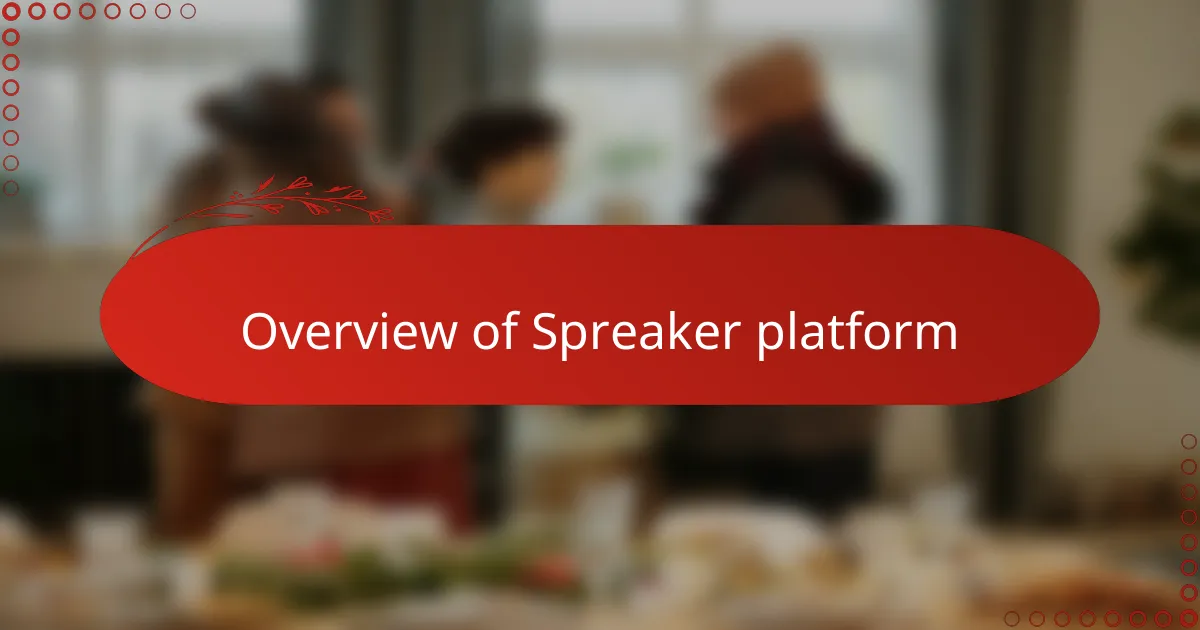
Overview of Spreaker platform
Spreaker is a platform that caught my attention because it combines the ease of podcasting with live radio broadcasting. What I found fascinating was its all-in-one approach—allowing me to record, livestream, and distribute my content without jumping between multiple tools. Have you ever struggled with juggling different apps just to get your voice out there? Spreaker solved that for me.
From my experience, the platform’s user-friendly interface makes it simple to focus on connecting with listeners rather than fumbling with complicated controls. The chat features during live sessions created a real-time conversation feeling, which made my broadcasts more personal and engaging. It felt like I was right there with my audience, not just speaking at them.
One feature that truly stood out was how Spreaker provided detailed analytics that helped me understand when and what my audience was most interested in. This insight wasn’t just numbers on a screen; it guided me in tailoring my content to their preferences, making the connection even stronger. Have you thought about how knowing your listeners’ habits can transform your approach? It certainly transformed mine.
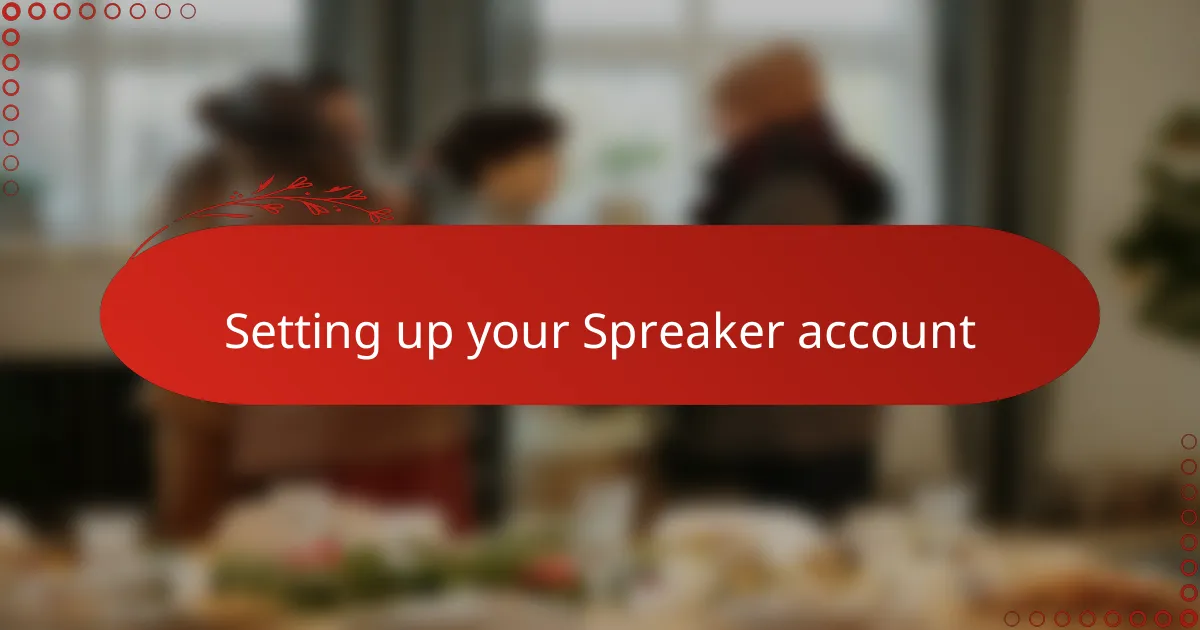
Setting up your Spreaker account
Creating my Spreaker account was surprisingly straightforward—it only took a few minutes to sign up and customize my profile. I remember feeling a mix of excitement and nervousness as I uploaded my photo and wrote a brief bio, wondering how these small details might shape a listener’s first impression.
Navigating the initial settings, like choosing my broadcast language and linking social media accounts, felt empowering. It was as if I was laying the groundwork for a community that I wanted to nurture. Have you ever paused to think about how these behind-the-scenes steps quietly build trust before you even say a word on air?
One thing I appreciated was how Spreaker guided me through setting up my first show, making the whole process less intimidating. I felt ready to hit “Go Live” knowing the platform had my back with clear prompts and easy-to-find options. Have you ever experienced that moment when technology stops being a barrier and becomes an enabler? That’s exactly what happened for me with Spreaker.
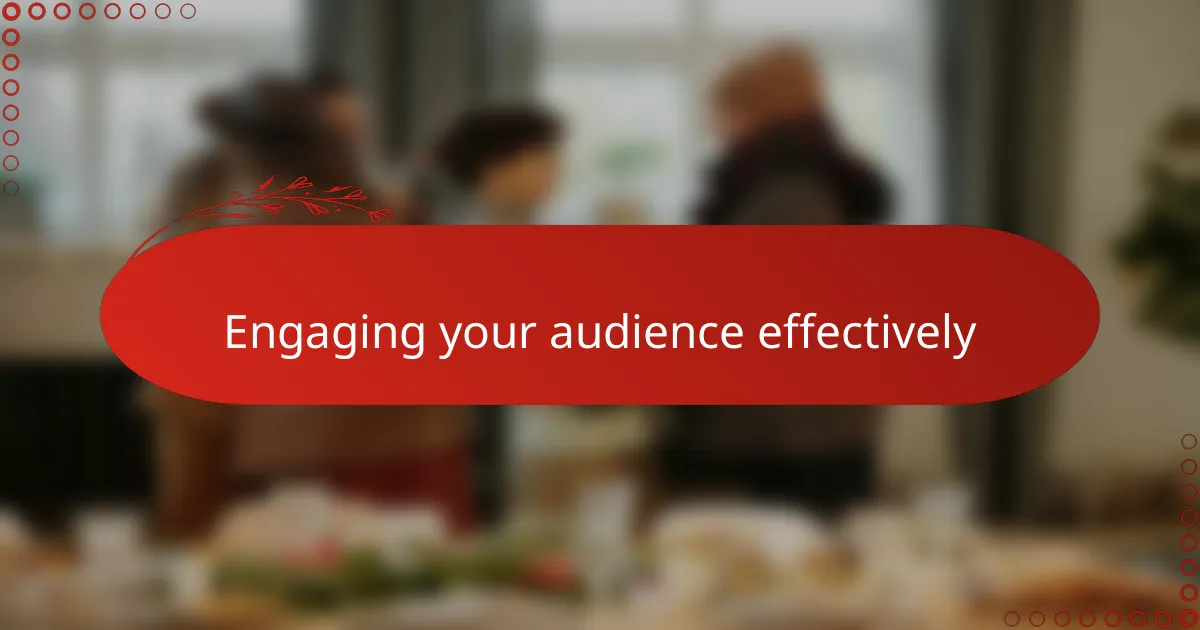
Engaging your audience effectively
Connecting with an audience goes beyond just speaking into a microphone; it’s about creating a dialogue. On Spreaker, I found that using the live chat during broadcasts transformed my shows from one-sided monologues into interactive conversations. Isn’t it amazing how a few typed words can make listeners feel seen and heard in real time?
I also learned to pay close attention to the feedback and questions that popped up during live sessions. Responding authentically not only made those moments memorable but also deepened the trust between me and my listeners. Have you noticed how people appreciate when you acknowledge them personally instead of talking over them?
Tracking listener habits through Spreaker’s analytics became a game-changer for me. Knowing when my audience was most active and which topics sparked the most interest helped me tailor my content in ways that truly resonated. Doesn’t it feel rewarding to create shows that your listeners actually look forward to each week?
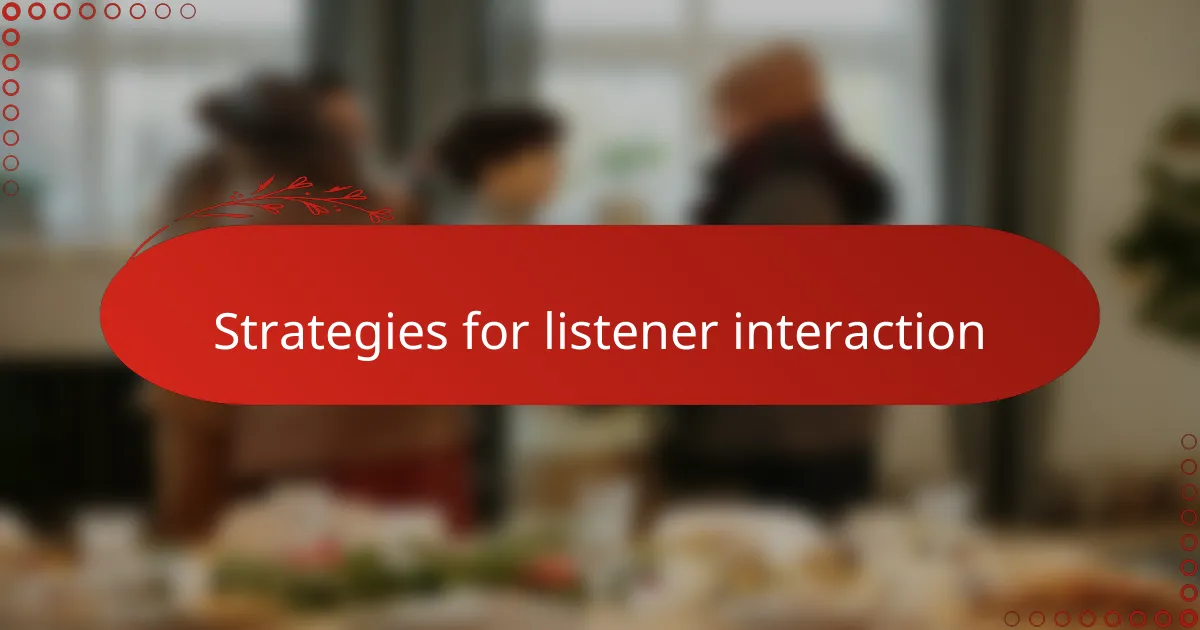
Strategies for listener interaction
Engaging listeners starts with creating spaces where they feel comfortable sharing their thoughts. On Spreaker, I made it a habit to ask open-ended questions during live shows, which invited listeners to jump into the conversation rather than just passively tuning in. Have you ever noticed how simply asking “What do you think?” can turn a quiet room into an energetic forum?
Another strategy I found effective was setting aside dedicated segments for listener shout-outs and stories. This not only made my audience feel valued but also built a sense of community, like we were all part of something bigger. From my experience, these moments became the heartbeats of my broadcasts—raw, relatable, and truly interactive.
Finally, I consistently used Spreaker’s chat and social media integration to keep the conversation going even after the show ended. It taught me that interaction isn’t just about the live moment but about nurturing ongoing relationships. Have you tried turning casual listeners into loyal friends by following up and continuing the dialogue? That’s where real connection thrives.
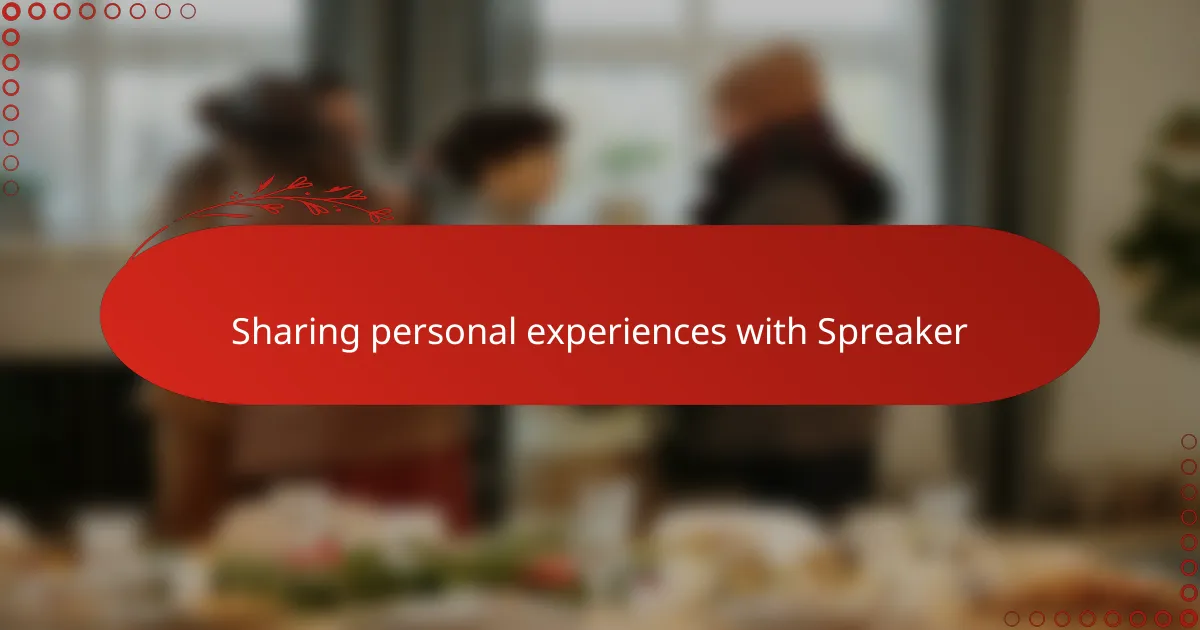
Sharing personal experiences with Spreaker
When I first started sharing my personal stories on Spreaker, I felt a mix of vulnerability and excitement. Opening up about my experiences created an instant bond with listeners who reached out afterward, telling me how much those moments resonated with them. Have you ever been surprised by how sharing something personal can make strangers feel like friends?
One memory that stands out was during a live broadcast when I shared a challenge I was facing. The chat suddenly filled with messages of encouragement and advice, reminding me that I wasn’t alone. That real-time empathy made me appreciate the power of authentic storytelling—something I hadn’t fully expected before using Spreaker.
Sharing personal experiences also helped me find my unique voice. Instead of sticking to a script, I started embracing my natural way of speaking, with all its quirks and pauses. This authenticity seemed to invite listeners in, making the connection feel genuine rather than rehearsed. Have you noticed how listeners respond differently when you sound like yourself? It changed everything for me on Spreaker.
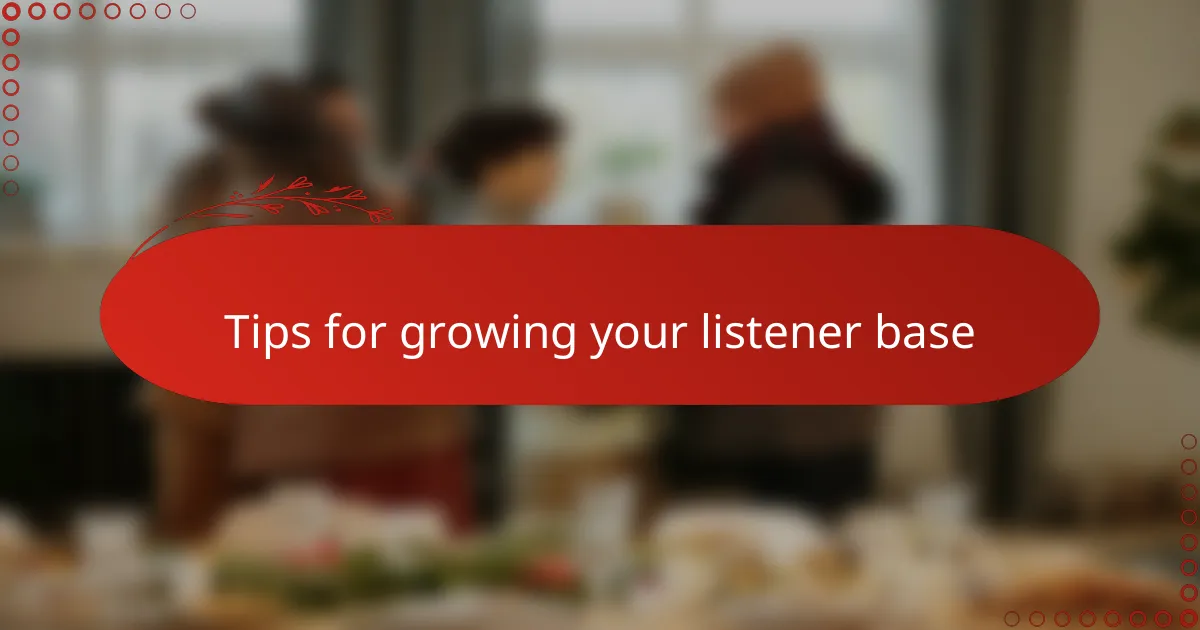
Tips for growing your listener base
Growing your listener base on Spreaker, I found, hinges a lot on consistency. Regularly showing up for your audience not only builds anticipation but also trust — people start to rely on your voice in their routine. Have you ever noticed how your favorite shows feel like a comforting part of your day just because they’re there, week after week?
Another tip I swear by is leveraging Spreaker’s analytics to understand when your listeners are tuning in most. Scheduling your broadcasts during those peak times made a noticeable difference for me; suddenly, I wasn’t just talking into the void, but reaching people ready to listen. Isn’t it empowering to let data guide your creative timing?
Finally, inviting your audience to participate actively keeps them coming back. I’ve seen the magic of asking simple questions live and encouraging shout-outs — it transforms the experience from passive listening into a shared moment. Do you think the idea of being heard motivates you more to show up? For me, it absolutely does, and that’s where listener growth truly begins.
